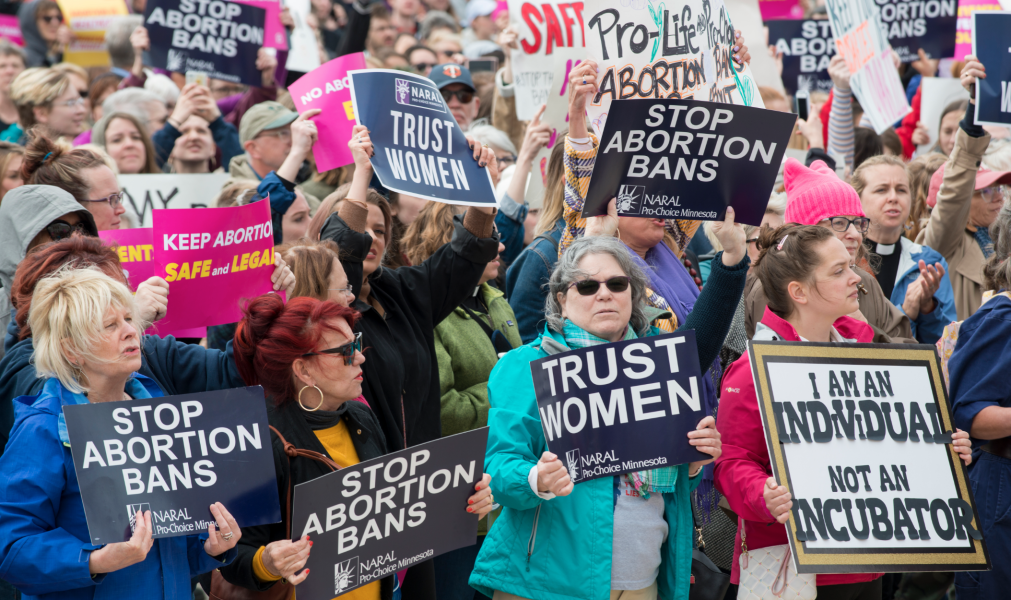Bad things are happening in Texas, but they aren’t the result of abortion bans.

Credit: Wikimedia Commons
Yeniifer Alvarez-Estrada Glick and her child in utero died two weeks after Roe v. Wade was overturned. The mother’s death, according to pro-choice activists, was the result of anti-science abortion bans. Had she only been permitted to kill her unborn child, as the writer Stephania Taladrid argued in the New Yorker magazine this week, she may have survived.
Glick’s history tells a different story.
At the age of three, Yeniifer and her parents illegally immigrated from Mexico to a rural Texas town called Luling, one hour east of San Antonio. When her father was deported, she and her mother remained in the United States, working for less pay in exchange for fewer questions. Growing up, Alvarez-Estrada helped her mother raise two more children, including one with severe autism. She lovingly referred to these half-brothers as “her boys.” In December 2021, one month after marrying a young Army Reserve specialist named Andrew Glick, the 26-year-old excitedly announced her own first pregnancy.
Glick had a three-thousand page long health history. It included diabetes, high blood pressure, and at least one prior hospitalization for pulmonary edema. Edema, also known as dropsy, is a condition in which excess fluid is retained and causes swelling and severe strain on the heart. In Glick’s case, the fluid retained in her lungs, inhibiting her breathing. Diabetes and heart disease ran in Glick’s family, but they were also side effects of her morbid obesity.
After getting pregnant, Glick’s health got worse, resulting in at least two ER visits. With no Social Security number and therefore no health insurance, every visit to the doctor was another strain of its own, and she took her prescribed medications only intermittently, according to the New Yorker’s report. In July 2022, Glick and her then 31-week-old unborn daughter, Selene, died in an emergency vehicle after calling 911. Her cause of death was reported to be hypertensive cardiovascular disease associated with morbid obesity, with pregnancy as a contributing factor.
Counterfactuals are hard to disprove. Who may say that a pregnant mother may not have died under different circumstances, when those different circumstances do not exist to be examined? Nevertheless, if it was truly an abortion ban which killed Glick, we would expect to see her relatively healthy prior to pregnancy and sick afterward. What we see instead is an impoverished young woman with multiple ailments getting hospitalized for edema a year before conceiving.
While her story should call up our sympathies, it should not cause us to neglect our reason. The real question here is not particular to one woman. The whole point of stories like Glick’s, and like Hadley Duvall’s, are to stir up the voting populace to say that, because of one woman’s tragedy, all infanticide should be permitted. That is, readers are being asked here to take an exceptional case and create from it a rule for the whole state, or nation. So, let us put that question into truthful terms: Is the solution to a sick people to kill its children?
We are often told that more pregnant women die in states with abortion bans. While the numeric comparison is broadly correct, the higher rate of maternal death in these states is not due to abortion bans. The most pro-life states tend to be those in the South and the Midwest regions of the country, which also boast the highest rates of heart disease, diabetes, and obesity. In these states, such as Mississippi, Arkansas, and Tennessee, pregnant women are dying of cardiovascular disease, hypertension, and obesity. These states also struggle with higher levels of immigrants, more limited healthcare options, and more poverty.
As with Covid-19, the trouble here lies in equating death with a contributing factor with death caused by that factor. While pregnancy does indeed add strain to poor health, Glick’s story would have been entirely different had she not been ill already. Fluid retention and higher-than-normal blood pressure are par for the course in carrying a baby, and very rarely life threatening. Heart disease, meanwhile, is the leading cause of maternal death in the United States, accounting for more than one third of maternal morbidity nationwide. Poor health, not pregnancy, causes the majority of pregnant deaths.
Subscribe Today Get daily emails in your inbox Email Address:
We are not allowed to say these things. Talking about obesity makes one an oppressor, and possibly a racist: Who are you to say one body type should be preferred over another? The fact that more than 2.5 times as many black mothers as white mothers die each year—a factor alone that makes Mississippi the worst state for maternal mortality—is supposed to prove something about racism, not poor health. If an illegal immigrant can’t get insurance in the United States, it is supposed to mean Americans are heartless, not that people should not break border laws.
The New Yorker would like the reader to believe this death was preventable by a different means. In the eyes of the four medical professionals interviewed by the magazine, Glick’s doctors failed because they did not offer the young mother a “therapeutic abortion” at the earliest possible occasion. Indeed, as early as seven weeks and as late as 23 weeks or later, the armchair physicians at the New Yorker assert those in charge of Glick’s care should have recommended taking Selene’s life to save her mother’s.
Glick’s doctors, who declined the New Yorker’s requests for an interview, still seem to affirm that a therapeutic abortion was not the right answer. Glick herself may have agreed with them. After spending several days in an intensive care unit in Austin at 23 weeks pregnant, Glick told her mother that “if a doctor had to choose between saving her or saving Selene, her daughter should come first.”
Sourse: theamericanconservative.com






